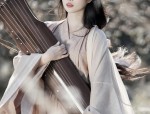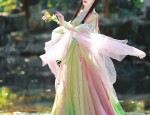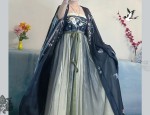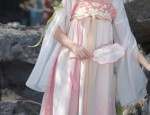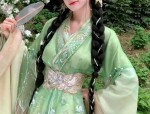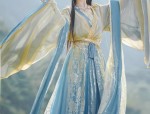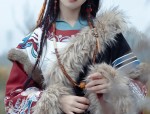The Splendor of Western Han Dynasty Clothing:A Journey Through the Rich Tapestry of Ancient Fashion
In the distant annals of Chinese history, the Western Han Dynasty (206 BC – 8 AD) stands out as a pivotal period in the evolution of clothing culture. This era, known for its political and social advancements, also witnessed remarkable transformations in fashion and textile technology. The clothing of the Western Han Dynasty remains a subject of interest for historians, archaeologists, and fashion enthusiasts, who seek to understand the intricate patterns and designs that reflected the culture and societal norms of its time.
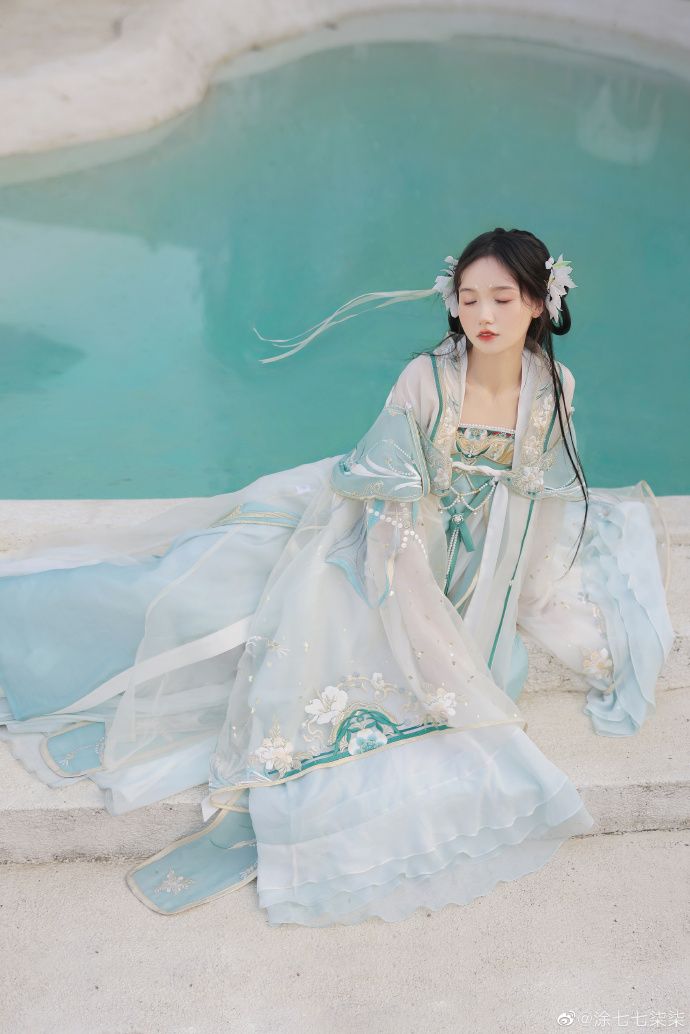
The Western Han Dynasty saw a significant influence of the Central Plains culture on clothing styles. The commoners' clothing was simple and practical, often made of cotton or silk. The upper class, on the other hand, enjoyed a more elaborate wardrobe that featured vibrant colors and intricate patterns. These patterns often took the form of geometric shapes or natural elements like flowers and birds, reflecting a blend of artistic creativity and cultural influence.
The clothing of the Western Han Dynasty was also influenced by the development of textile technology. The use of silk and cotton became widespread, leading to a surge in the production of lightweight and comfortable fabrics. These fabrics were often dyed using natural pigments, resulting in vibrant hues that added to their beauty and uniqueness. The advancement in weaving techniques also allowed for more intricate patterns and designs to be incorporated into the fabrics.
One of the most distinctive features of Western Han clothing was its use of accessories. These accessories, often made of precious metals or gemstones, added a touch of luxury and elegance to the clothing. They were often used to decorate the head, neck, wrists, and even the feet, creating a harmonious balance between the different elements of the outfit.
The clothing of the Western Han Dynasty also reflected the societal norms and values of its time. The clothing styles and patterns often served as a symbol of status and rank within society. The upper class wore more elaborate and expensive clothing, while the commoners were restricted to simpler styles. This was a reflection of the social hierarchy and the division between the rich and the poor in society.
In addition to its beauty and uniqueness, Western Han clothing also holds significant historical value. It provides valuable insights into the culture, traditions, and societal norms of ancient China. The patterns, designs, and materials used in these clothes offer a window into the past, allowing us to understand the lives and times of people who lived centuries ago.
In conclusion, Western Han Dynasty Clothing represents a pivotal chapter in Chinese fashion history. Its influence can be seen in modern Chinese fashion, which continues to draw inspiration from its rich tapestry of patterns, designs, and cultural values. The study of Western Han clothing not only offers insights into ancient fashion but also provides a connection to our cultural roots, allowing us to appreciate the rich history and diversity of our cultural heritage.(共约 1696 个单词)

 Previous Post
Previous Post

